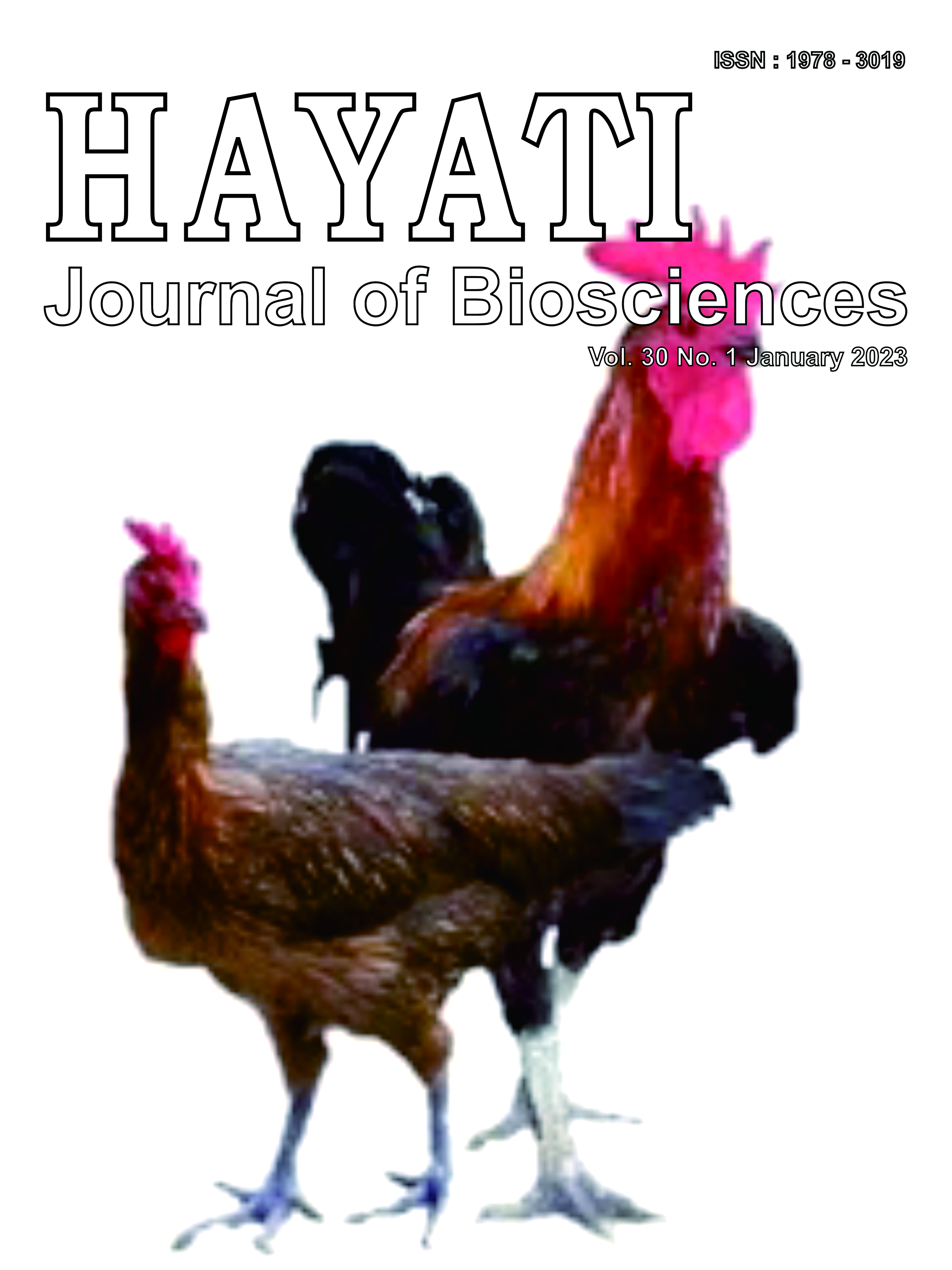The Effects of Ultraviolet B on The Efficacy of Bacillus thuringiensis var. kurstaki Formulations Against Tobacco Armyworm, Spodoptera litura (Lepidoptera: Noctuidae)
Abstract
Tobacco armyworm (Spodoptera litura Fab.) is one of the major insect pests of crops in Indonesia. The management of this pest still depends on the use of chemical insecticides. The use of bio-insecticides, such as Bacillus thuringiensis (Bt.), are known to be alternatives, but it easily degraded by sunlight. This research aimed to study the effects of UV B on Bt. pathogenicity and to explore plant-based additives as UV B protectants for Bt. against armyworm. Thirteen plant extracts were screened based on their UV spectra absorbencies using UV spectrophotometry. The extracts, namely cloves, Jicama, Celebes pepper, turmeric, and Moringa, then used for the formulations of Bt. and exposed under UV B lights for 0, 72, and 144 h. After exposure to UV B, Bt. formulations were tested for bioassay against one- day-old 1st and one day old 2nd larval instars of tobacco armyworm. The result indicated that at 72 and 144 h of UV B exposures, the Bt. added formulations were signifcantly different compared to Bt. alone. At 72 h exposure against the 2nd larval instar, the larval mortality of tobacco armyworm on the second day of observation on Bt. formulated with Celebes pepper and turmeric was 97.3 and 80%, respectively, whereas, at 144 h exposure, the mortality was 96 and 89.3%, respectively. This study concluded that Celebes pepper and turmeric extracts were the potential to be used as the Bt. protectants against UV B.
Downloads
Copyright (c) 2023 Sukirno Sukirno, Siti Sumarmi, R.C. Hidayat Soesilohadi, Ign. Sudaryadi, Hari Purwanto, Abdulrahman Saad Aldawood

This work is licensed under a Creative Commons Attribution-NonCommercial 4.0 International License.
HAYATI J Biosci is an open access journal and the article's license is CC-BY-NC. This license lets others distribute, remix, tweak, and build upon author's work, as long as they credit the original creation. Authors retain copyright and grant the journal/publisher non exclusive publishing rights with the work simultaneously licensed under a https://creativecommons.org/

























.png) IPB University
IPB University Department of Biology
Department of Biology The Indonesian Biological Society
The Indonesian Biological Society 

